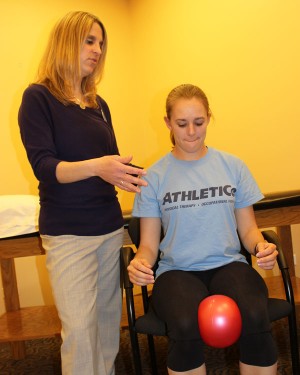
Physical Therapy for Endometriosis
Leave a CommentEndometriosis occurs in women when endometrial tissue forms on the outside, instead of the inside, of the uterus. Normally, the endometrial tissue is shed during menstruation and exits the body. With endometriosis, the tissue that has grown outside of the uterus and is located in the pelvic and abdominal areas bleeds during menstruation but is unable to be discharged from the body. This leads to irritation and inflammation in this area. Over time, the repeated bleeding and healing can lead to development of scar tissue and adhesions in the area which will result in pelvic pain.
Symptoms of endometriosis include:
- Painful menstruation
- Pelvic, lower back and/or abdominal pain during menstruation
- Irregular menstrual cycles
- Pain during and/or after intercourse
- Pain with bowel movements
- Infertility
The pain from endometriosis can be debilitating during menstruation as the most common site for growth is on the ligaments which help to suspend the uterus within the pelvis. These ligaments attach to the sacrum which is located at the lower part of the spine. Pain will then be present deep in the pelvic region between the rectum, coccyx (tailbone), and the vagina.
Treatment options for endometriosis include
- Medications – Medications can assist with pain and to decrease the amount of bleeding during menstruation. There is not a singular medication that will work for all patients and eliminate all symptoms.
- Surgery- Surgery is typically performed laproscopically to remove the extra uterine tissue and/or scar tissue that has formed in the abdominal and pelvic areas. In cases where women have decided that they are ready, a hysterectomy may be performed.
- Surgery and/or Physical Therapy – Physical therapy treatment can help to decrease the pelvic pain, restore your mobility and provide you with tools to treat and decrease your pain on your own. Additionally, your tolerance for exercise and activities can be increased to allow for a return to a more active and healthy lifestyle. We will work on:
- postural exercises to assist with elongation of the spine and decreasing tension at the abdomen
- soft tissue release for the adhesions
- pelvic floor muscle work to relax the muscles which are often tight due to pain
- use of biofeedback to assist with relaxation and coordination of the abdominal and pelvic floor muscles.
If you are experiencing endometriosis symptoms and chronic pain, please contact one of our Women’s Health specialists today to help you improve your activity with less pain!

